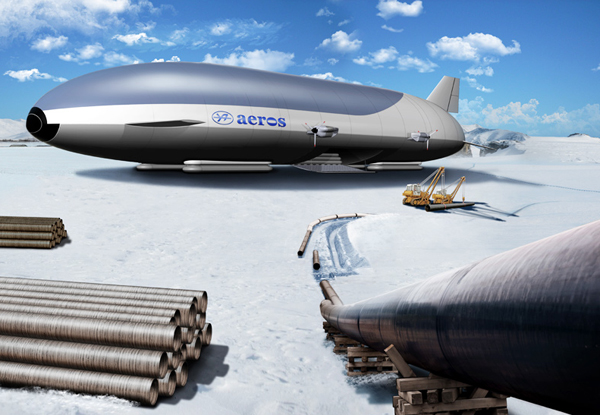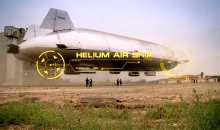Amur to Carry Ore by Airship from Siberia Mine
Amur Minerals Corp., a copper and nickel explorer in Russia’s Far East, plans to fly equipment to its Siberian operation by airship to bypass snow-clogged roads.
Amur will use two airships from Worldwide Aeros Corp. to carry loads of as much as 250 metric tons, the company said today in a statement after signing a memorandum of understanding with the U.S. manufacturer. The aircraft will also be used to transport production from the mine.
Zeppelin manufacturers need mining contracts to revive their business, 77 years after the U.S. Hindenburg airship crash ended most buyer interest for decades. With better designs and a buoyant gas that can’t ignite, makers such as Aeros and Hybrid Air Vehicles Ltd. are hammering out their first sales deals with the mining industry to complement truck and rail transport.
The airships can be used on rough terrain because they take off and land vertically. For Amur, their use will reduce the estimated $140 million expense of building a 320-kilometer (200-mile) road to the nearest rail station, as well as “substantially” cutting freight costs, it said.
Amur is seeking a mining license from Russian authorities to start construction at its Kun-Manie project, which holds resources of 650,600 tons of nickel and 178,400 tons of copper. It may start using the air vehicles two years after reaching an accord with the supplier, it said.
Siberian Transport
Mining companies in Siberia, whose natural-resource wealth includes coal, iron ore and petroleum as well as copper and nickel, have to contend with temperatures of as low as minus 60 degrees Celsius (minus 76 Fahrenheit). The severity of the winter can hamper road transport, prompting producers to look for cost-effective alternatives.
Airship fuel costs are about a third of those for a cargo plane, Aeros Chief Executive Officer Igor Pasternak said last year. He described Aeros’ plans to build 500-foot airships with a zeppelin-like rigid structure that can carry loads as heavy as 250 tons and travel at speeds of more than 100 miles an hour.
“This partnership in the innovative use of developing heavy-lift transport could substantially reduce our anticipated capital expenditure to develop Kun-Manie and shorten the upfront construction period,” Robin Young, CEO of London-based Amur, said in today’s statement.
via – Businessweek.





